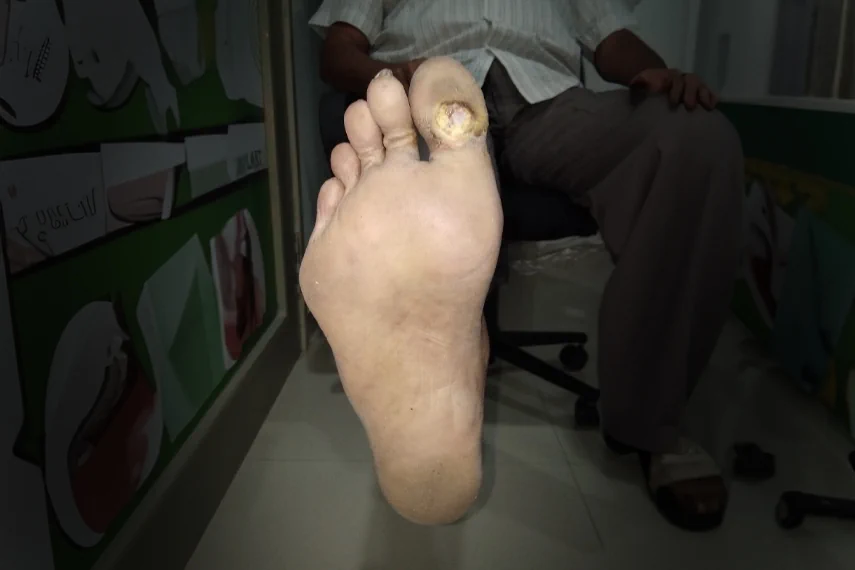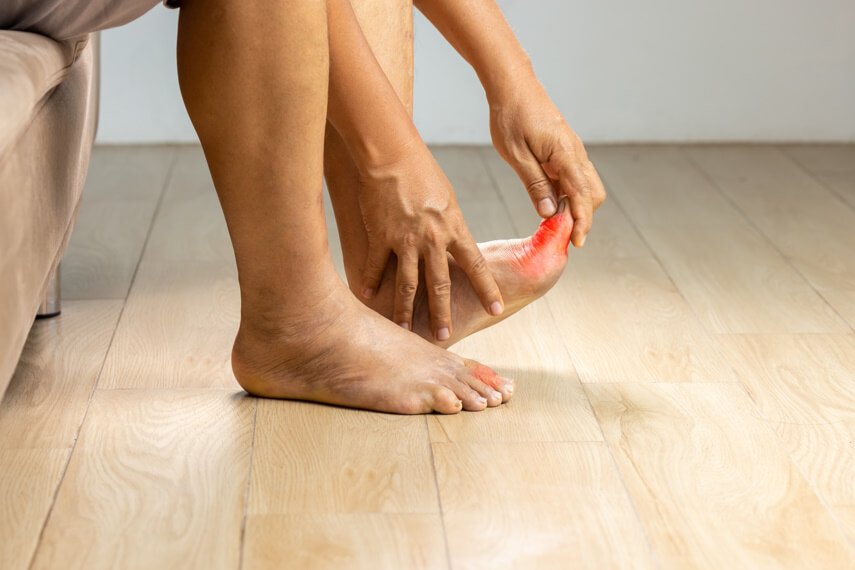Diabetic Foot and Toe Ulcers Treatment: Treatment, Prevention, & Causes
Introduction
Diabetes is a complex condition that affects many aspects of your health, including your feet. Among the most concerning complications are foot and toe ulcers, which, if left untreated, can lead to severe consequences. These ulcers are not only painful but can also lead to infections and, in extreme cases, amputations. This blog will delve into diabetic toe ulcer treatment, prevention, and the causes of these ulcers. With expert guidance from the Surat Diabetic Foot & Ulcer Clinic, you can take proactive steps to manage and treat these ulcers effectively.
What are Foot and Toe Ulcers?
Foot and toe ulcers are open sores or wounds that typically occur on the feet or toes of individuals with diabetes. These ulcers occur when skin tissues break down, exposing the underlying layers. The condition is common among diabetic patients due to poor circulation and nerve damage, which can cause minor injuries to escalate into ulcers.
Who Gets Foot and Toe Ulcers?
Foot and toe ulcers predominantly affect people with diabetes. Individuals with long-standing diabetes, poor blood glucose control, or existing diabetic neuropathy are at a higher risk. Other risk factors include:
- Peripheral arterial disease (PAD)
- Poor foot care habits
- History of previous ulcers or amputations
- Obesity
What Do Foot and Toe Ulcers Look Like?
Foot and toe ulcers can vary in appearance depending on their severity. Early ulcers may appear as shallow, red, or yellow open sores on the skin. As they progress, these ulcers may deepen, and the exposed tissue may turn black if gangrene sets in. The surrounding skin often thickens or becomes callused, with possible signs of infection such as redness, warmth, and pus.
How Big Are Foot and Toe Ulcers?
The size of foot and toe ulcers can range from small, coin-sized sores to large, deep wounds. The depth and size of an ulcer are critical in determining the stage and required treatment. Early diagnosis is crucial to prevent the ulcer from enlarging and deepening.
How Are Foot and Toe Ulcers Diagnosed?
Diagnosing a foot or toe ulcer involves a thorough physical examination by a diabetic foot surgeon or healthcare provider. They will assess the wound’s size, depth, and any signs of infection. They will also review a detailed medical history, including diabetes management and any previous ulcers.
What Tests Are Done to Determine If I Have a Foot or Toe Ulcer?
To determine the severity and underlying causes of a foot or toe ulcer, your healthcare provider may order several tests:
- Blood Tests: To check for infection or blood sugar level
- Wound Culture: To identify bacteria if infection is suspected.
- Imaging Tests: X-rays or MRI scans to determine if the infection has spread to the bones or surrounding tissues.
- Doppler Ultrasound: To assess blood flow in the feet and legs.


What Are the Types of Foot and Toe Ulcers?
Foot and toe ulcers are open sores or wounds that can develop due to various underlying causes. They are typically classified into three main types: neuropathic ulcers, ischemic ulcers, and neuroischemic ulcers. Each type has distinct characteristics, depending on factors like blood circulation and nerve damage.
1. Neuropathic UlcersNeuropathic ulcers result from nerve damage caused by diabetes, where patients lose sensation in their feet, making it difficult to notice injuries. These unnoticed injuries can turn into ulcers.
Ischemic ulcers are caused by poor circulation, usually due to peripheral artery disease (PAD). The lack of blood supply prevents proper healing, leading to ulcers.
Neuroischemic ulcers occur due to a combination of neuropathy and poor circulation. These ulcers are the most complex and pose the highest risk for complications.
- Characteristics: Usually appear on the margins of the foot, with discoloured or thin skin.
- Pain: Pain may be masked by neuropathy or may be severe due to ischemia.
- Treatment Focus:A multidisciplinary approach is needed, often including revascularisation, offloading, and infection control.
What Causes Foot and Toe Ulcers?
Foot and toe ulcers in people with diabetes are primarily caused by a combination of factors:
- Poor Circulation: Reduced blood flow to the feet can slow down healing and increase the risk of ulcers.
- Neuropathy: Nerve damage can prevent a person from feeling injuries, leading to unnoticed wounds that develop into ulcers.
- High Blood Sugar Levels:Poorly managed diabetes can weaken the immune system and slow healing.
- Foot deformities: Conditions like bunions or hammertoes can create pressure points, making the skin prone to ulcers.
- Inadequate Foot Care: Neglecting foot hygiene and wearing ill-fitting shoes can lead to sores and ulcers.
How Are Foot and Toe Ulcers Treated?
Treatment for diabetic feet and ulcers involves a combination of medical interventions and self-care practices:- Debridement: Removing dead tissue from the ulcer to promote healing.
- Dressings: Specialised dressings are applied to keep the ulcer moist and protect it from infection. The best dressings for diabetic foot ulcers often include hydrocolloid, foam, or alginate types.
- Offloading:Using special footwear, braces, or crutches to reduce pressure on the ulcerated area.
- Medication: Antibiotics may be prescribed if the ulcer is infected.
- Surgery: In severe cases, surgery may be required to remove infected tissue or improve blood flow.
- Blood Sugar Management: Keeping blood glucose levels under control is crucial for healing and preventing future ulcers.
When Should I See My Healthcare Provider About Foot and Toe Ulcers?
It’s vital to seek medical attention at the first sign of a foot or toe ulcer. Delays in treatment can lead to complications, including infection, gangrene, and even amputation. Visit the diabetes foot clinic as soon as you notice any open sore, redness, swelling, or warmth in your feet.
Conclusion
Foot ulcers and diabetes are closely linked, making it crucial for diabetic patients to take proactive steps in preventing and managing ulcers. Without prompt attention and proper care, these ulcers can lead to severe complications, including infections and amputations. At the Surat Diabetic Foot & Ulcer Clinic, patients receive specialised care to ensure their feet remain healthy and free from ulcers. Regular check-ups, early intervention, and diligent care for diabetic feet are essential. With the right diabetic foot ulcer treatment and personalised care for diabetic foot ulcer, patients can successfully manage and prevent these painful sores.For expert care and treatment, visit the Surat Diabetic Foot & Ulcer Clinic. Our team is dedicated to providing comprehensive care for diabetic foot conditions, helping you stay ahead of complications. Don’t wait—schedule an appointment today to ensure the health of your feet.









.jpg)

